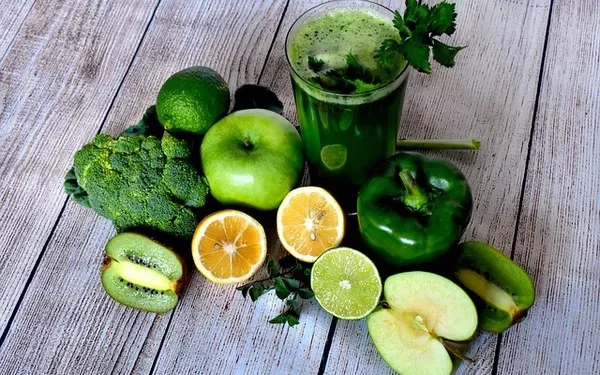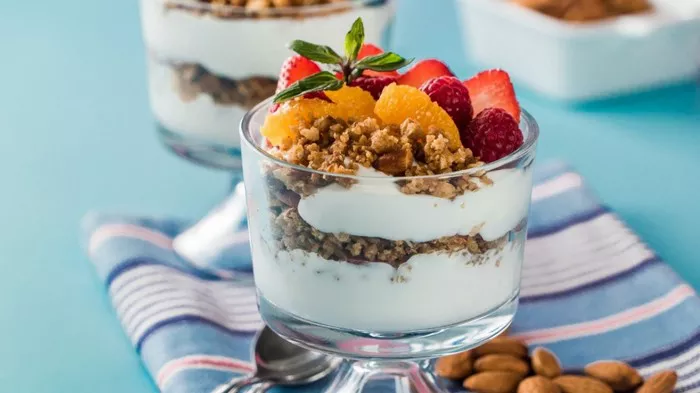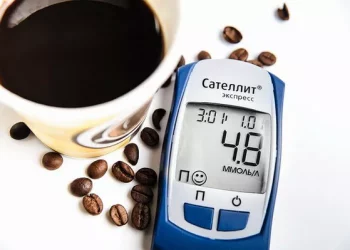Type 2 diabetes is a condition that requires careful management of blood glucose levels to avoid complications. While medications and insulin therapy play vital roles in treatment, diet is a critical aspect of managing the disease. One of the key questions for people with Type 2 diabetes is what foods they can eat freely without negatively impacting their blood sugar levels.
In this article, we will explore foods that are considered beneficial and safe for Type 2 diabetics. These foods not only help in controlling blood sugar levels but also promote overall health. The goal is to offer a comprehensive guide for individuals with Type 2 diabetes, focusing on nutrient-dense, low-calorie, and low-carbohydrate options that contribute to stable blood glucose levels.
Understanding Type 2 Diabetes and the Role of Diet
Type 2 diabetes is characterized by the body’s inability to effectively use insulin, leading to elevated blood glucose levels. Managing these levels through diet, exercise, and lifestyle changes is crucial. A diet that helps maintain blood glucose levels within a target range can reduce the risk of complications such as heart disease, kidney disease, nerve damage, and vision problems.
Foods that are high in fiber, rich in healthy fats, and low in refined carbohydrates help stabilize blood sugar levels and improve insulin sensitivity. It’s important to note that “eating freely” does not mean eating unlimited quantities of certain foods, but rather choosing the right foods that can be eaten in moderate amounts without spiking blood sugar levels.
1. Non-Starchy Vegetables
Non-starchy vegetables are a cornerstone of a Type 2 diabetes-friendly diet. These vegetables are low in carbohydrates and calories but high in fiber, vitamins, and minerals. The fiber in these vegetables slows the absorption of sugar and helps regulate blood glucose levels.
Leafy Greens: Spinach, kale, collard greens, and Swiss chard are excellent choices. These vegetables are not only low in calories and carbs, but they also contain antioxidants, which can help reduce inflammation in the body.
Cruciferous Vegetables: Broccoli, cauliflower, Brussels sprouts, and cabbage are all nutrient-dense and low in carbohydrates. They are also high in vitamin C, which is important for immune function.
Bell Peppers: Rich in vitamin C and antioxidants, bell peppers are a versatile and delicious addition to a diabetic-friendly diet.
Zucchini and Squash: These vegetables are low in carbohydrates and can be used in a variety of dishes, from stir-fries to salads.
Cucumbers: Low in carbs and high in water content, cucumbers can help keep you hydrated and feeling full without spiking your blood sugar.
Tomatoes: Although technically a fruit, tomatoes are commonly used as vegetables in cooking. They are low in sugar and provide important nutrients like potassium and lycopene, an antioxidant.
2. Lean Proteins
Proteins are an essential part of the diet for people with Type 2 diabetes, as they help with muscle repair, satiety, and blood sugar regulation. Choosing lean proteins ensures that you are getting the nutritional benefits without excess fat, which can contribute to weight gain and insulin resistance.
Chicken and Turkey: Skinless, lean cuts of chicken and turkey are great sources of protein. They are low in fat and can be prepared in a variety of ways, making them versatile in many dishes.
Fish and Seafood: Fatty fish, such as salmon, mackerel, sardines, and trout, are particularly beneficial because they are rich in omega-3 fatty acids. These healthy fats support heart health, which is crucial for diabetics, as they are at higher risk for cardiovascular disease.
Eggs: Eggs are an excellent source of protein and healthy fats. Despite concerns about cholesterol, recent research has shown that eggs can be part of a healthy diet for diabetics, provided they are eaten in moderation.
Tofu and Tempeh: For those who prefer plant-based options, tofu and tempeh are excellent sources of protein. These soy-based products are low in carbohydrates and can be incorporated into various dishes, from stir-fries to soups.
Greek Yogurt: Unsweetened Greek yogurt is a great source of protein and probiotics, which can help improve gut health. Opt for plain Greek yogurt, as flavored versions often contain added sugars.
3. Whole Grains
While refined grains such as white rice and white bread should be avoided due to their high glycemic index, whole grains are an excellent option for diabetics. Whole grains are rich in fiber, which slows the absorption of sugar and helps keep blood glucose levels stable.
Quinoa: Quinoa is a complete protein, meaning it contains all nine essential amino acids. It’s also high in fiber, making it a great choice for managing blood sugar.
Oats: Steel-cut oats or rolled oats are a good source of soluble fiber, which has been shown to help regulate blood glucose levels. They can be enjoyed as oatmeal or used in baking.
Brown Rice: Unlike white rice, brown rice is a whole grain that retains its fiber and nutrients. It has a lower glycemic index and is a better choice for diabetics.
Barley: Barley is another whole grain that is high in fiber and has a low glycemic index. It can be used in soups, stews, and salads.
Farro: Farro is an ancient grain that is rich in fiber and protein. It is also a good source of magnesium, which helps with insulin sensitivity.
4. Healthy Fats
Incorporating healthy fats into the diet is essential for people with Type 2 diabetes. Healthy fats support heart health, provide satiety, and help with the absorption of fat-soluble vitamins. It’s important to focus on unsaturated fats while limiting saturated fats and trans fats.
Avocados: Avocados are rich in monounsaturated fats, which are heart-healthy fats. They also contain fiber and potassium, which help regulate blood pressure and blood glucose levels.
Olive Oil: Olive oil, especially extra virgin olive oil, is a great source of monounsaturated fats. It has anti-inflammatory properties and can be used in cooking or as a dressing for salads.
Nuts and Seeds: Almonds, walnuts, chia seeds, flaxseeds, and sunflower seeds are all good sources of healthy fats. They also provide fiber and protein, which help stabilize blood sugar levels.
Nut Butters: Unsweetened nut butters, such as almond butter and peanut butter, are rich in healthy fats and protein. They can be spread on whole grain toast or used as a dip for vegetables.
5. Berries
Berries, such as strawberries, blueberries, raspberries, and blackberries, are low in sugar and high in antioxidants. These fruits are packed with fiber, vitamins, and minerals, making them an excellent choice for people with Type 2 diabetes.
Strawberries: High in vitamin C and antioxidants, strawberries are low in carbs and can be eaten fresh or added to smoothies, salads, or yogurt.
Blueberries: Blueberries are rich in anthocyanins, which have been shown to improve insulin sensitivity. They can be enjoyed fresh, frozen, or added to various dishes.
Raspberries: Raspberries are particularly high in fiber, which helps regulate blood sugar. They also contain a variety of vitamins and minerals.
Blackberries: Blackberries are another excellent berry choice for diabetics. They are rich in fiber and antioxidants and have a low glycemic index.
6. Legumes
Legumes, including beans, lentils, and peas, are an excellent source of plant-based protein and fiber. They have a low glycemic index and help stabilize blood sugar levels by releasing glucose more slowly into the bloodstream.
Chickpeas: Chickpeas, or garbanzo beans, are a versatile legume that can be used in salads, stews, and hummus. They are high in fiber and protein, which makes them an excellent choice for managing blood glucose.
Lentils: Lentils are rich in fiber and protein, making them an excellent option for diabetics. They are also low in fat and can be used in soups, salads, and curries.
Black Beans: Black beans are a great source of protein and fiber. They have a low glycemic index and are rich in antioxidants, which may help reduce inflammation in the body.
Kidney Beans: Kidney beans are another legume that is high in fiber and protein. They can be added to salads, stews, and chili.
7. Dairy (In Moderation)
Dairy products, when consumed in moderation, can be part of a healthy diet for Type 2 diabetics. They provide essential nutrients like calcium, protein, and vitamin D. It’s important to choose low-fat or fat-free options to avoid excess saturated fat.
Milk: Low-fat or skim milk is a good source of calcium and protein. For people with Type 2 diabetes, it’s best to choose unsweetened versions to avoid added sugars.
Cheese: Cheese can be enjoyed in moderation, as it is rich in calcium and protein. Opt for lower-fat varieties like part-skim mozzarella or ricotta.
Yogurt: Greek yogurt is an excellent source of protein and probiotics, which support gut health. Choose unsweetened Greek yogurt to avoid added sugars.
8. Hydration
Staying well-hydrated is essential for managing Type 2 diabetes. Water is the best option, but other low-calorie beverages can also help maintain hydration levels.
Water: Drinking water regularly helps maintain healthy kidney function and keeps blood sugar levels stable. Water also helps flush out excess glucose from the body through urine.
Herbal Teas: Herbal teas, such as chamomile, peppermint, and green tea, are low in calories and provide hydration. Green tea is particularly beneficial due to its high antioxidant content.
Unsweetened Coffee: Coffee, when consumed without added sugar or high-fat creamers, can be enjoyed in moderation. It has been shown to have potential benefits for blood sugar regulation due to its antioxidant properties.
Conclusion
When managing Type 2 diabetes, it is crucial to focus on whole, nutrient-dense foods that support stable blood glucose levels. Non-starchy vegetables, lean proteins, whole grains, healthy fats, and certain fruits like berries are all excellent choices for people with diabetes. Additionally, legumes, dairy (in moderation), and proper hydration play vital roles in promoting overall health.
It’s important to note that while these foods can generally be eaten freely, portion control is still key to managing blood sugar. By combining these foods with regular physical activity and consistent monitoring of blood glucose levels, individuals with Type 2 diabetes can lead a healthy, fulfilling life.
Always consult with a healthcare provider or nutritionist to tailor a diet plan that suits your specific needs and to ensure you’re making the best choices for your health.
Related topics:
How Does Blood Sugar Rise Without Eating?
























